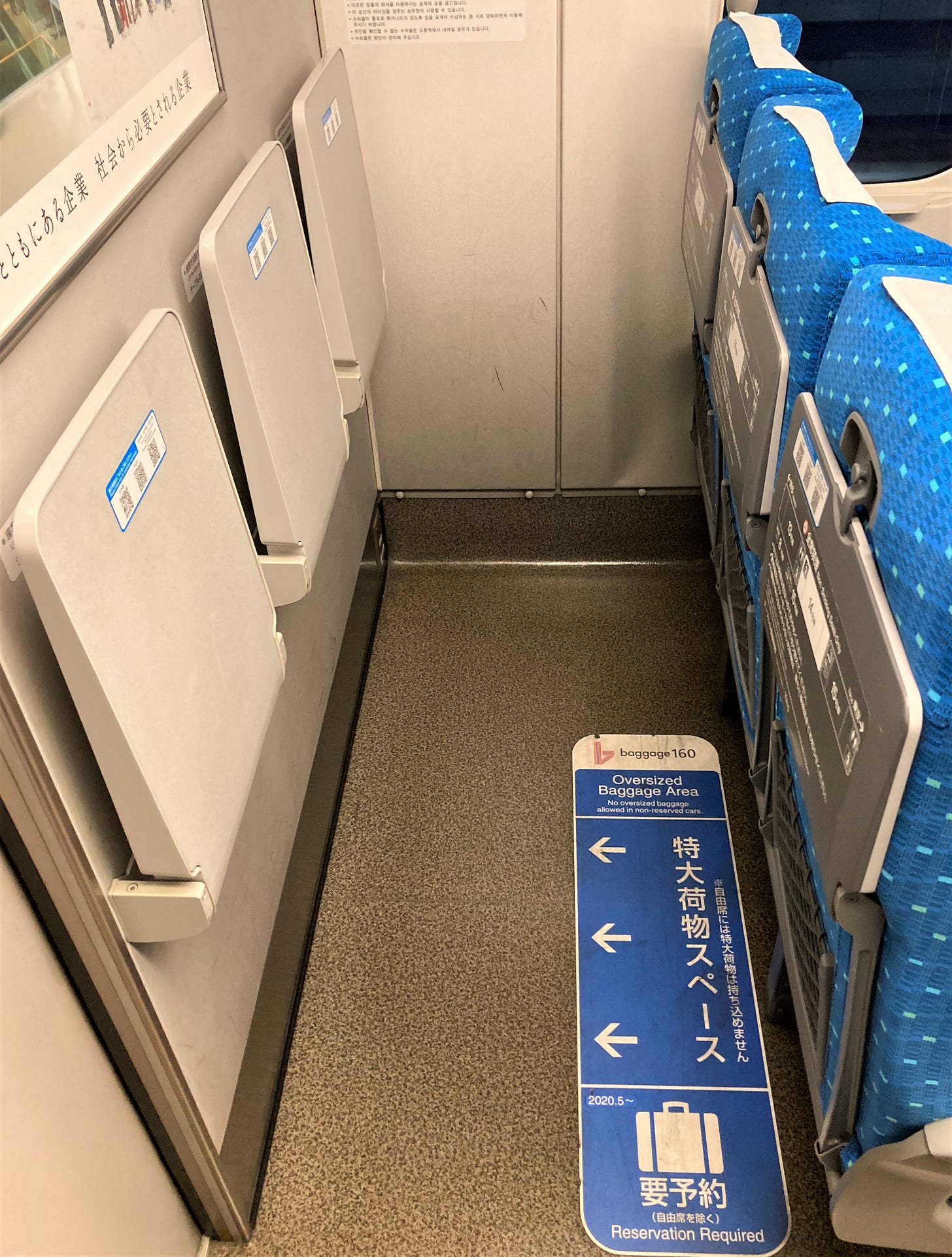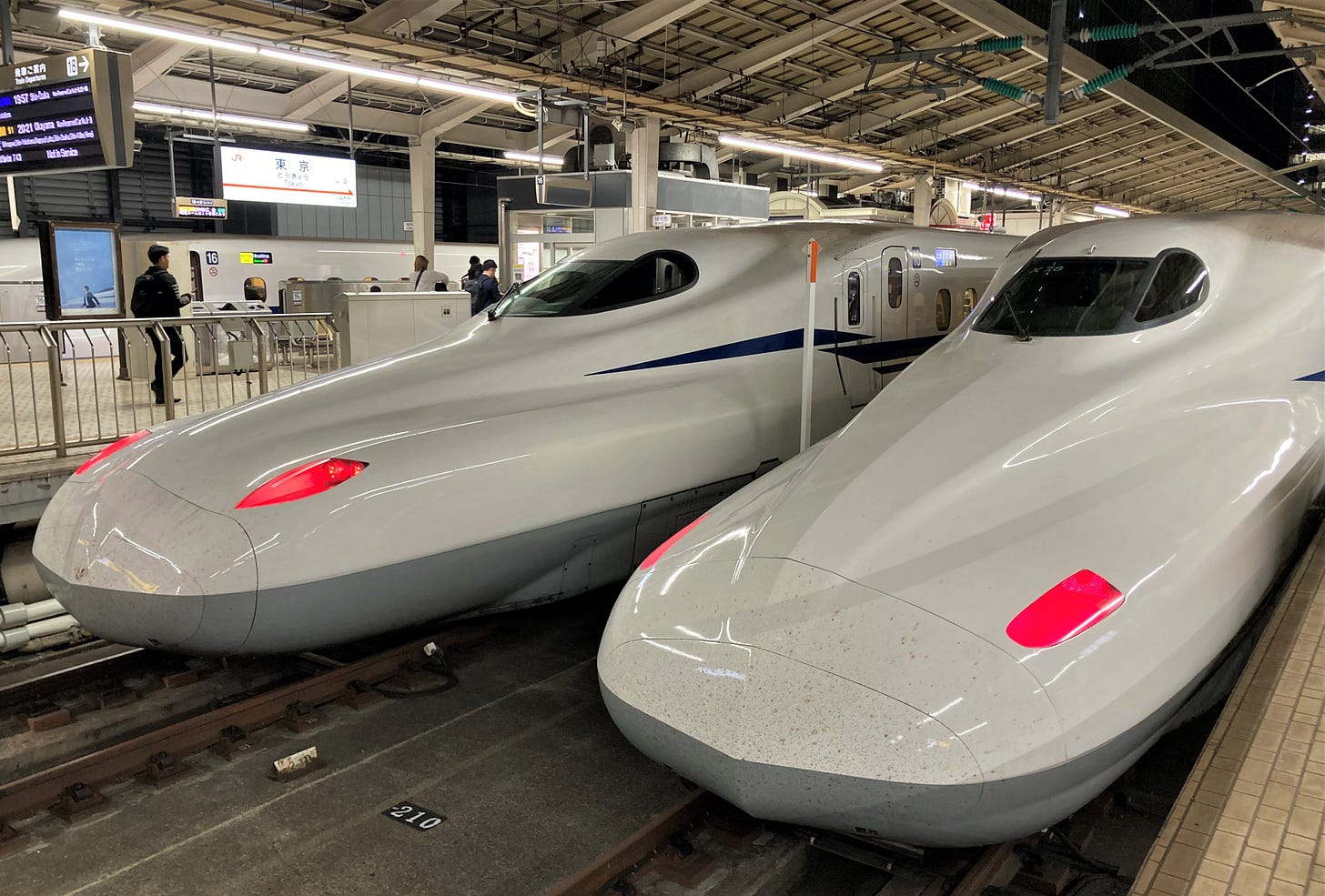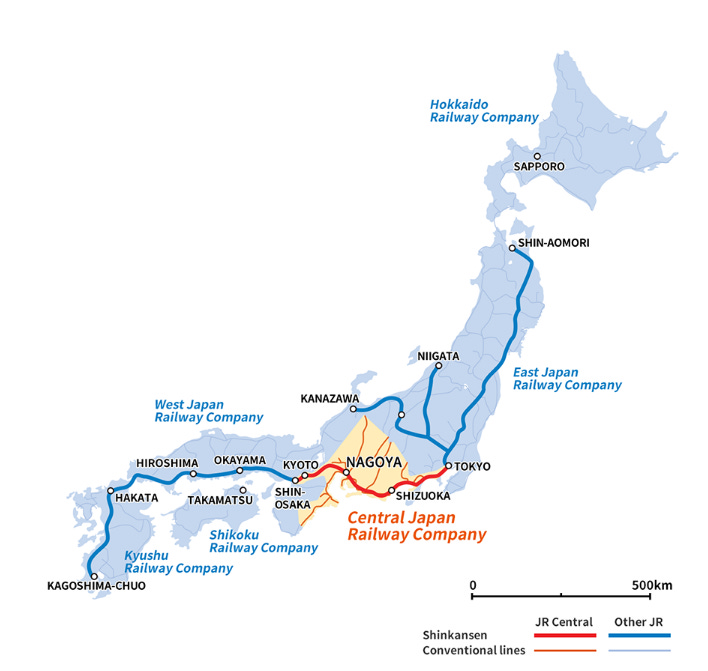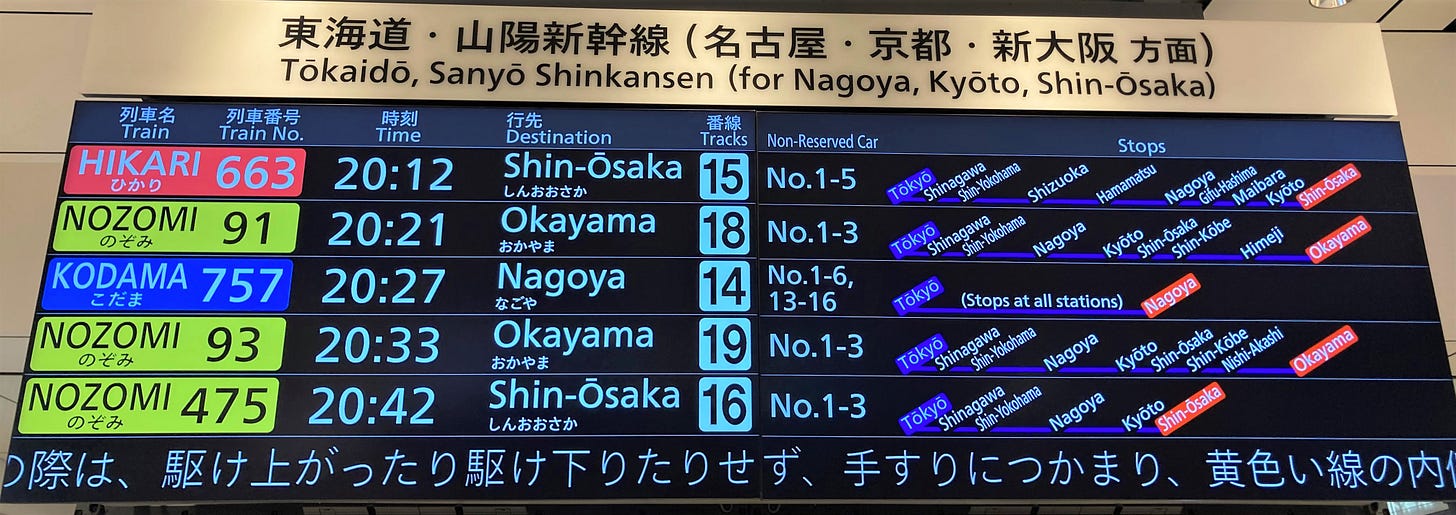My memories of the Shinkansen go back to before I entered kindergarten. At that time, the Tokaido Shinkansen was in service only as far as Shin-Osaka, and from there, I had to transfer to a conventional limited express train to go west. In over half a century since then, the Shinkansen network has extended from Hakodate in the north to Kagoshima in the south, except Shikoku. Although the Shinkansen network continues to expand, the main line is still the Tokaido Shinkansen, operated by JR Central(Central Japan Railway Company) between Tokyo and Shin-Osaka, the most frequently used line by travelers from overseas.
The Tokaido Shinkansen runs from Tokyo to Nagoya, Kyoto, and Osaka, running east to west through Honshu, making it the main artery of Japan. It is no exaggeration to say that the Tokaido Shinkansen is one of the most essential transportation systems because of its speed and ease of use. I want to share five tips about the Tokaido Shinkansen in this post.
The definition of the Tokaido Shinkansen is a bullet train running from Tokyo to Shin-Osaka. Still, the longest line can go from Tokyo to Hakata (Fukuoka) on a single bullet train called the Sanyo Shinkansen because the operating company from Shin-Osaka to Hakata is JR West Japan.
Although the Tokaido Shinkansen runs from Tokyo to Shin-Osaka, many Shinkansen trains departing from Tokyo go directly to Okayama, Hiroshima, and Hakata, all served by JR West.
There are three types of Shinkansen trains to Shin-Osaka: "Nozomi," "Hikari," and "Kodama," which differ in the number of stations they stop at and the number of non-reserved seat cars. Travelers from Tokyo to Kyoto and Osaka often use the "Nozomi" train due to its large number of trains and short travel time.
1. The best seats to enjoy the view of Mt. Fuji
When traveling from Tokyo to Kyoto or Osaka, the highlight is the majestic Mt. Fuji seen from the Shinkansen. Thirty to forty minutes after leaving Tokyo Station on the Nozomi train, just past Mishima Station, a large Mt. Fuji comes into view on the right side of the direction of travel. What is important is which direction of travel you choose when reserving a seat on the Shinkansen.
If you are in a standard car, you will be seated in the "D" or "E" row of the alphabet, and if you are in a green car (1st class), you will be seated in the "C" or "D" row. If you cannot see Mt. Fuji on the outward journey due to bad weather or other reasons, you can get the same spot on your return trip to Tokyo. You should see the view, especially in winter when the visibility is good.
2. Oversized luggage
Shinkansen trains don't initially have designated oversized luggage corners like in the US or Europe. If you have items with three sides measuring between 161 cm and 250 cm, you must reserve the particular space for oversized luggage in advance. It seems that items measuring less than 161 cm fit on a reticular rack, so reservations are unnecessary. JR Central doesn't charge you to make a reservation for oversized luggage, but please remember to reserve it.

If you have oversized luggage, sending it to your next accommodation by courier service is an option. It should arrive the next day after shipping if it is in Kyoto. The biggest and most reliable company is called Yamato Transport. Their trademark is a black cat carrying a tiny kitten by her mouth.
3. Elimination of unreserved seats of Nozomi
During the three busiest periods, the reserved seats fill up early, and passengers boarding from stations other than the first station may need to be in queues, leading to lines waiting to board and delays.
This measure will be effective from December 28 through January 4, starting with the upcoming year-end and New Year's holidays. Most travelers from overseas may use reserved seats, but you should keep it in mind if you use Tokaido Shinkansen during this period.
4. Differences between "Nozomi" and "Hikari
Nozomi trains have the most significant number of trains from Tokyo to Kyoto and Shin-Osaka, with Hikari trains running at most two per hour.
Nozomi has a concentration of passengers from Tokyo to Kyoto and Shin-Osaka. However, when compared in detail, there is little difference in travel time between Nozomi and Hikari. The average time required is less than 30 minutes.
Suppose you have a Japan Rail Pass and suddenly decide to travel from Tokyo to Kyoto or Osaka on the same day. Nozomi has three unreserved seat cars, excluding peak season, and the Hikari has five. If you want to take Nozomi with a Japan Rail Pass, you must get a separate ticket, which is a hassle.
5. Package tours by JR Tokai Tours
This package tour would be the choice for long-term travelers, but JR Tokai Tours offers discounted rates that include a hotel and a Shinkansen train. Fares vary depending on the time of year, the rank of the hotel, and the time of day the Shinkansen, but the convenience of using the Shinkansen early in the morning or at night or using the Hikari instead of Nozomi can reduce the cost with a bit of patience. It is worth considering.
Note: JR Central has a bad reputation for the transaction of the ticket site. Some of my clients claimed they could not buy tickets for Shinkansen on their internet site. I can't test the transaction using an overseas credit card, but I would appreciate your comment.
Tokaido Shinkansen is the transportation you can't avoid if you visit Kyoto and Osaka. The operator changes rules from time to time. It will be a good idea to keep checking the usable information. Would you happen to have any other tips for the Tokaido Shinkansen? If so, please leave comments!!










